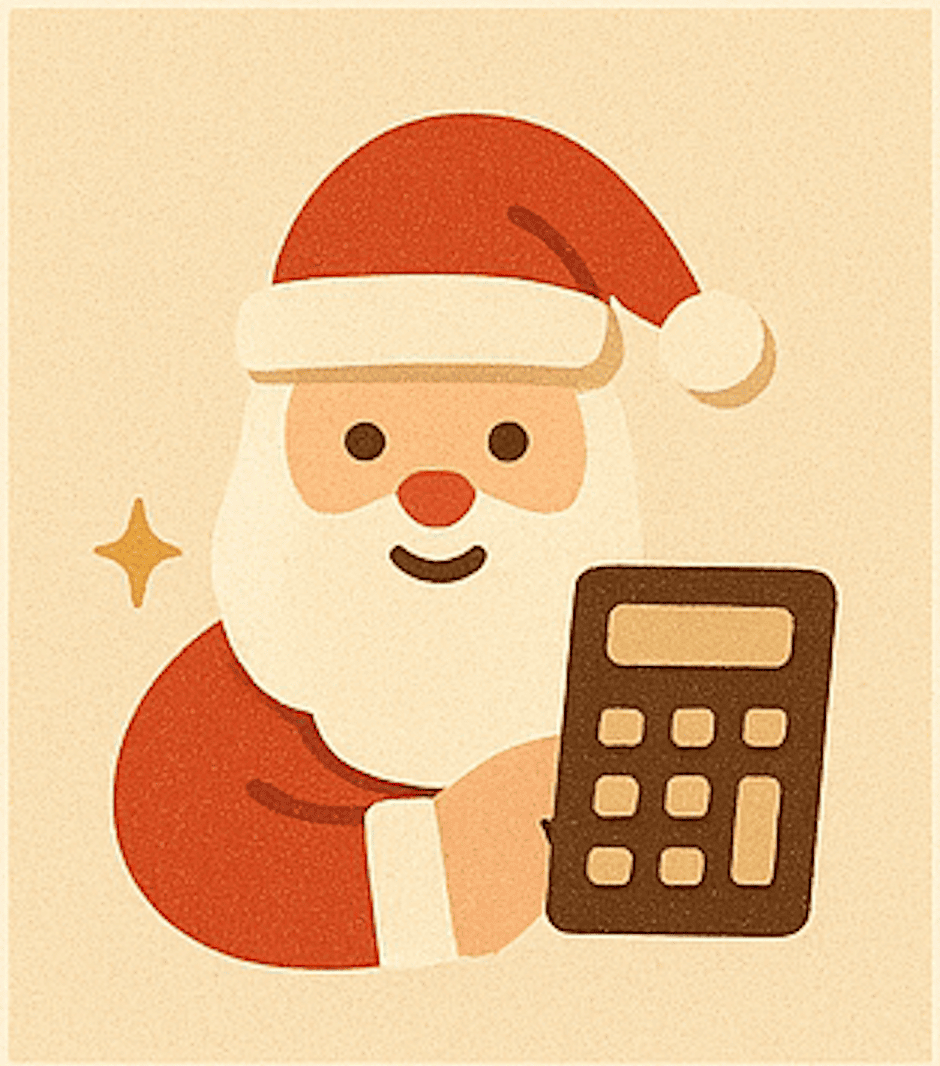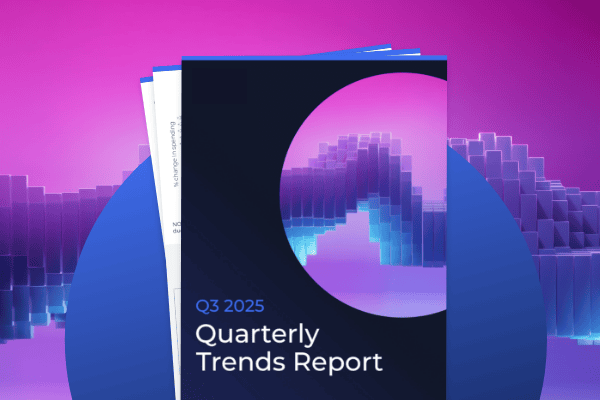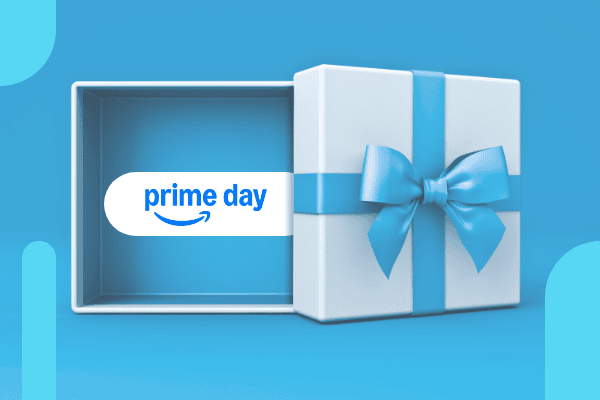Summary
Holiday campaign planning should start with your own performance data because that’s where the most powerful insights live. While third-party research and industry trends can guide direction, nothing compares to the clarity that comes from your own campaigns. Skai’s Celeste AI helps you unlock that value with 12 strategic prompts that turn past performance into smarter retail media, paid search, and social advertising decisions for the season ahead. Recent season forecasts reinforce why planning matters: Adobe projects U.S. online holiday sales of $253.4B in 2025 (+5.3% YoY), with Cyber Week contributing $43.7B. Mastercard expects e-commerce growth of ~7.9% YoY, outpacing in-store sales (~2.3%)
Micro-answer: Use first-party data to guide Q4.
Last updated: October 14, 2025 – Updated with 2024–2025 data
Last-minute budget shifts, frantic copy tweaks, and way too many dashboards open at once. But what if your holiday helper wasn’t another spreadsheet, but an AI built to keep campaigns merry and bright? For 2025, analysts note that genAI impact grows when paired tightly with owned data and clear use cases—exactly the motion this post outlines.
That’s where Celeste AI comes in. Unlike general-purpose chatbots, Celeste is purpose-built for commerce media. It connects the dots across search, social, and retail platforms to surface insights, build plans, and recommend optimizations in real time. As you finalize your holiday campaigns, tap into your own data to help guide you. If you need a single home for planning and execution, explore our omnichannel marketing platform for unified, walled-garden management. And for prompt-driven analysis on your performance data, see Celeste AI for AI-powered marketing workflows.
Whether it’s reallocating budget between Amazon and Walmart, identifying which headlines are worth doubling down on, or spotting when inventory is about to cut your campaign short, Celeste turns holiday stress into something closer to a strategy session with a partner who never sleeps.
What are 12 holiday planning prompts to try with Celeste?
Your data is the brief.
Mine historic ROAS/CVR to prioritize budgets, creative, and audiences.
Turn last year’s winners into this year’s playbook across retail media, search, and social—then refresh daily as new signals arrive so Q4 spend follows proof, not hunches.
Think of this next part as less “holiday scramble” and more like a strategy session with a partner who never sleeps. These 12 holiday planning prompts are your stocking stuffers: quick, practical ways to keep campaigns sharp, budgets balanced, and ads sparkling brighter than the competition.
Some of these you can use now to plan before Q4, and some you will use during the holiday shopping season to refine your campaigns.
How should we budget like “Santa’s Accountant”?
Budget where efficiency compounds.
Rank channels by ROAS/CPA and reallocate with guardrails.
Compare the last 60–90 days across Amazon, Walmart, Google, and Meta; shift budget to top-quartile performers, reserve prime-time headroom, and cap low-yield segments before Cyber 5 to protect margin while scaling winners.

Rank your channels, reallocate budgets, and maximize conversions before the big day
- Objective: Analyze omnichannel performance
- Outcome: Data-driven budget allocation plan
- Prompt: Compare impressions, clicks, ad revenue, and ROAS across Google, Meta, Amazon, and Walmart from the past 90 days. Rank channels by efficiency and recommend budget reallocation strategy to maximize conversions within budget constraints for Black Friday and Cyber Monday this year.
How do last year’s wins predict this year’s heroes?
Let history pick your heroes.
Map 2024 winners to 2025 lines and promos.
Pull BF/CM 2024 results, segment by product line, and pre-approve increases for repeatable themes; plan creative refreshes for “rising” items identified by momentum, inventory, and margin signals before peak weeks.

Unwrap last year’s results to guide this year’s seasonal activations
- Objective: Ad activation for new or seasonal products
- Outcome: Leveraging results from similar products to guide ad activation on newer items
- Prompt: Analyze last holiday season for Black Friday (Nov 29, 2024) through Cyber Monday (Dec 2, 2024) from both the Campaigns and Products grids. Create two different performance overviews on what drove sales during this time. One summary based on the Campaigns grid results and one based on the Products grid results. Segment insights by the “Product Line” dimension.
How do we rebuild messy campaigns (aka “no fruitcake”)?

Clean structure, tighter targeting.
Consolidate learning and align budgets to intent tiers.
Audit naming, ad grouping, match types, negatives, and portfolio pacing; rebuild so queries and products stay tightly coupled to goals across Sponsored Products/Brands and paid search.
Refine campaign structures so they’re neat, not nutty
- Objective: Campaign organization and/or structure
- Outcome: Uncover opportunities to refine campaign setup to align with your goals to and improve targeting precision
- Prompt: Review my current campaign structure for my Amazon Sponsored Products and Sponsored Brands campaigns. Is there a better way to structure campaigns to ensure my keyword targeting is precise to the products being advertised? Review campaign naming conventions, ad group organization, keyword match type distribution, and budget allocation efficiency.
Which headlines should we double down on—and why?

Double down on what sells.
Scale high-revenue themes; retire duds.
Rank headline motifs by revenue and CTR, then spin 5–10 compliant variants for late-stage shoppers; pair with audience recency windows to balance reach and efficiency during evening spikes.
See which copy jingled all the way — and which flopped
- Objective: Evaluating ad headline copy
- Outcome: Budget allocation to the better-performing headlines during peak traffic days
- Prompt: Review my existing ad copy on Google search campaigns from the past 30 days. Identify messaging themes based on CTR and rank each theme highest to lowest based on clicks. Highlight which headlines drove the most impressions and clicks and note which ones underperformed so I can avoid them in future copy, and provide 5 new headline copy ideas.
What’s a simple holiday survival plan for beginners?
Turn chaos into a checklist.
Ship a weekly plan with clear owners and triggers.
Use last year’s Q4 data to draft pre-event tests, peak-hour caps, and post-event tasks; keep budgets resilient with pacing guardrails and “stop loss” rules for sinkholes.

Because new campaign managers deserve more than milk and cookies
- Objective: Weekly plan leading into the event and event steps for beginners
- Outcome: Expert guidance on how to manage ads during a busy season
- Prompt: I’m a new campaign manager and have never created a campaign management plan leading into, during, or after an event. I am tasked with creating a plan for our Google search ads on a $30k budget. Can you review last year’s performance for Q4 2024, provide an overview of performance and deliver a structured plan that tells me what I can do to drive better results for Q4 2025?
How do we avoid stockouts sinking our spend?
Prioritize spend where inventory and margins deliver.
Back winners with stock and profit; throttle risk.
Blend product-level performance with inventory and margin data to upweight high-converting, well-stocked items; pause or reduce bids where inventory is thin to prevent wasted clicks.

Prioritize spend where inventory and margins actually deliver
- Objective: Product-level analysis
- Outcome: Prioritizing spend on profitable items
- Prompt: Review current Amazon inventory levels along with product performance data from the past 30 days. Guide budget allocation toward high-margin, high-converting products with adequate stock levels. Identify products to pause or reduce spend on if inventory is limited.
How can last year’s budget mix guide this year’s plan?

Let budgets tell the story.
Recreate the mix that earned returns—then refine.
Break down 2024 by format (SP/SB/SBV/DSP), extract the combinations that drove ROI, and set 2025 pacing and caps to repeat what worked while testing small, deliberate deviations.
Learn from last year’s allocations to guide this year’s strategy
- Objective: Analyze last year’s results for this year’s budget allocations
- Outcome: Discover what budget allocations delivered your results last year and how to maximize this year
- Prompt: Review Q4 2024 data and summarize month-to-month trends. Break down results for each ad format – Sponsored Products, Sponsored Brands, and Sponsored Brands Video – and list key takeaways in a bulleted list.
How do we build holiday keyword lists that actually perform?

Harvest intent, not just sparkle.
Balance evergreen with seasonal, then set CPC guardrails.
Compare holiday-specific vs. evergreen term performance; add proven seasonal queries to the right campaigns, set CPC ranges by historic efficiency, and deploy negatives to protect margins.
Build holiday keyword lists that actually perform, not just sparkle
- Objective: Identifying valuable seasonal keywords
- Outcome: Hyper-targeted keyword lists based on shopper behavior
- Prompt: How do holiday-specific keywords perform compared to evergreen terms during Q4, and what would the optimal CPCs be? Review all retail media campaigns, make a list of the top priority keywords to include, and tell me which campaigns they should be added to.
How should we scale budgets through peaks and valleys?

Plan the sleigh ride.
Scale into peaks; glide through valleys.
Using Nov 20–Dec 15 patterns, publish weekly conversion, CPC, and ROI baselines per channel; reserve evening headroom, identify cheapest conversion days, and right-size bids to capture the five highest-converting days without overspend.
Scale spend through peaks and valleys without crashing the reindeer
- Objective: Granular budget plan that addresses peaks and valleys of historical budget pacing during the holiday season
- Outcome: Data-driven 2025 budget scaling strategy
- Prompt: Analyze 2024 holiday performance (Nov 20-Dec 15) to build a data-driven 2025 budget scaling strategy. Provide: Weekly conversion rates, CPCs, and ROI by channel, the top 5 highest-converting days and lowest-CPC day, and any insights into weekly patterns and day-of-week performance trends.
What headlines persuade last-minute shoppers?

Make urgency useful.
Generate compliant, proven late-stage hooks.
Use the past 60 days of headline revenue and CTR to brief 5–10 variants aimed at procrastinators; couple with short-window audiences and delivery cutoff messaging for high intent.
Grab ad headlines that nudge procrastinators to buy now
- Objective: Headline copy generation targeting last minute shoppers
- Outcome: List of copy to A/B test leading into final shopping days
- Prompt: Review the past 60 days of results for all copy in my Headlines and identify messaging themes that resonated the most with shoppers, ranked by ad revenue. Generate 5-10 headline ideas that target last minute shoppers based on what language will continue to drive revenue.
How should Black Friday insights fund Cyber Monday?

Let Friday fund Monday.
Clone winners with fresh caps, bids, and audiences.
Port top campaigns/queries/products/headlines from Friday; pause sinkholes, retarget recent engagers, and manage frequency to harvest carryover intent efficiently on Monday.
Cash in on Cyber Monday‘s sweet ROI using Black Friday insights
- Objective: Black Friday analysis
- Outcome: Optimizations for Cyber Monday
- Prompt: Analyze Black Friday (Nov 28, 2025) results across all of my channels. List the top 5 campaigns, keywords, products, and headlines that drove the highest revenue during this time. Use these results to tell me how to further maximize this performance to capitalize on sales for Cyber Monday in two days.
How do we package learning and plan the next sprint?

Turn insight into action.
Ship an exec recap and four-week plan.
Summarize what changed and why, outline next steps (budget shifts, audiences, creative tests), assign owners, and track outcomes to inform January decisions.
Deliver the post-event report your boss actually wants to read
- Objective: Post-event results
- Outcome: Comprehensive report for stakeholders
- Prompt: I am a marketing manager creating a post-event report for Black Friday and Cyber Monday for my Marketing Director and VP of Marketing. Create an executive summary of what happened leading into, during, and after Black Friday (Nov 28, 2025) and Cyber Monday (Dec 2, 2024). Provide the key details these personas will want to see and list 3-5 next steps on how to maximize the next 4 weeks of the holiday season.
Conclusion: Learn from these holiday planning Celeste prompts to get better at marketing genAI
By the time the tree is lit and your dashboards are groaning, you’ll be glad you had Celeste pulling the strings behind the scenes. Think of these prompts as your seasonal survival kit — part strategy, part sanity-saver. Industry researchers also expect commerce media to keep compounding, making disciplined, data-driven planning even more valuable for 2025.
But Celeste isn’t just here for the holidays. It’s built to take on the grind year-round, helping marketers cut through the noise, spot opportunities faster, and keep campaigns performing no matter the season. Whether it’s Prime Day, back-to-school, or a random Tuesday when performance needs a boost, Celeste is designed to be that always-on partner who makes sure you’re not just keeping up, but staying ahead. After all, marketers deserve a little peace and joy every quarter.
Related Reading
– MinsterFB experiences 40% ROAS growth with Skai’s AI Dayparting for Amazon — Intraday bid recommendations and scheduling lifted ROAS during peak hours.
– How Acosta Group Streamlined Reporting and Empowered Its Team with Celeste AI — Prompt templates and natural-language insights cut reporting time from hours to minutes.
– How Marshall Helped ZUP to Drive Revenue Using AI-Powered Insights — Celeste-informed keyword strategy reduced CPCs 44% and lifted ROI 34%.
Glossary
Celeste AI — A type of Skai genAI assistant used for turning first-party performance data into planning prompts, summaries, and optimization tasks across retail media, search, and social.
Portfolio Pacing — A type of budget control used for reserving prime-time headroom and reallocating spend to top-performing entities.
Dayparting — A type of scheduling tactic used for aligning bids/budgets to hourly demand and auction pressure.
Carryover Intent — A type of recent-audience behavior used for retargeting shoppers who engaged on Black Friday to convert on Cyber Monday.
Frequently Asked Questions
Celeste helps marketers optimize holiday campaigns using their own historic performance data. It guides budget shifts, creative tweaks, and cross-channel insights.
Use AI tools like Celeste to generate data-driven prompts. They help you plan budgets, refine copy, and make real-time optimizations across channels.
Use phased planning. Test early, scale in October, and finalize creative and retargeting before Cyber 5. Base decisions on your own past results.







